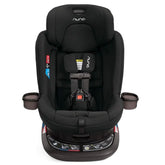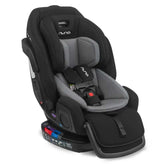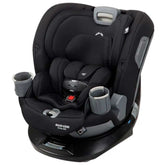5 Helpful Tips for How to Use a Balance Bike With Your Child

Learning to ride a bike is a significant milestone in childhood. However, it can be a time-consuming process, particularly if a child is hesitant about taking off the training wheels. That's why many parents consider balance bikes the perfect method to introduce their little ones to cycling. Balance bikes are generally smaller, more lightweight, and specifically designed for young children. A balance bike doesn’t have pedals but allows a child to sit on it with their feet touching the ground. There is even some research that indicates that using a balance bike, especially during the early stages of instruction, can lead to children learning to cycle at a much earlier age. Additional studies confirm that kids who learn to ride earlier are more inclined to have a healthy weight when school-aged. Let’s take a closer look at how to teach a kid to use a balance bike and the potential advantages.
What Exactly Is a Balance Bike?
Balance bikes are bicycles made for children that have all the regular framework, handlebars, and wheels of a regular bicycle – they just don’t have pedals or a drivetrain. To operate it, the child sits on the seat and walks in place, pushing along the ground with their toes, until they learn how to coast. Ultimately, the child takes longer and longer strides until they are able to glide for long periods of time.
There aren’t any stabilizers or training wheels. The child simply keeps their feet on the ground while getting a feel for how to balance and coordinate their movements. When they feel good about it, they can level up to a traditional bicycle with pedals. You can even find balance bikes with handbrakes, which let a child practice breaking before advancing to a traditional bike.
A major upside to practicing with a balance bike is that it helps your little one begin to develop a sense of balance at an early age. It can also help nurture a love of cycling as well as offer an additional way for them to get around (instead of simply sitting in a stroller or wagon). Practicing with a balance bike can lay the foundation for your child's continued engagement in physical activity as they grow older.
How Old Should a Child Be to Use a Balance Bike?
Around 2 years old is typically the ideal age to start practicing with a balance bike, but it really just depends on the physical and developmental readiness of your child. Some kids who want to keep up with older siblings already riding bikes may be ready to start as early as 18 months old.
When you start exploring how to teach a child to use a balance bike and whether they're ready, consider whether they have well-developed gross motor skills such as walking, climbing, and stepping up. They should be capable of easily straddling the bike's center when standing. Additionally, they should display signs of independence and a willingness to explore new experiences.

How to Use a Balance Bike
Learning how to use a balance bike closely mirrors the way kids learn to ride a traditional bike. Your child should be outfitted with appropriate safety equipment and taught how to maintain balance and stop the bicycle. However, it's natural for some children to initially feel hesitant. To make the process of learning to ride a balance bike smoother and more enjoyable for your child, here are some helpful tips.
1. Keep safety in mind.
Helmets are essential with any moving toys, from skateboards to scooters to bikes. Constant adult supervision and a safe place to ride (with no other motorized vehicles) are also necessary. It’s also important to be sure your child is wearing appropriate clothing. Close-toed shoes (no sandals or flip-flops), along with pants and a snug jacket or shirt are the safest options. Sunglasses or other protective eyewear can also be helpful for keeping bugs, sand, or sunlight out of their eyes.
2. Ensure they’re comfortable and confident.
All kids are different. Some take to a balance bike instantly, while others may need a bit more encouragement. Don’t pressure your little one to do anything they’re not ready to do. Give them time to get used to it, even jogging or walking alongside them in the beginning. There’s not really a time limit for how long to use a balance bike. Keep supporting and encouraging them until they’re ready to level up.
3. Choose a safe spot.
To ensure an optimal learning environment for your child, select an open area that’s free from traffic and distractions. Parks, bike trails, and certain sidewalks are great spots to practice with a balance bike. Avoid areas with numerous obstacles such as crowded pedestrian areas, bodies of water, parked cars, stairs, or densely populated tree areas. Try to find a gently sloping hill that will allow your little one to glide easily without picking up too much speed. (Be sure there’s ample space at the bottom for them to stop.)
4. Instruct them on technique.
Talk to them about the bike and how it works. Urge them to keep looking ahead (not down at their feet) and to pay attention to where they’re going. Explain that they use their feet to push the bike forward and that they can glide by lifting their feet off the ground while it’s moving. This helps them learn coordination and balance.
It’s equally important to teach them about braking. Most children will instinctively lower their feet to stop the bike, but be sure they understand that they have to do this if they’re going too fast or about to run into something. Remind them that the bike won’t stop on its own. If your child’s bike has handbrakes, you can eventually show them how to incorporate those as well (assuming their fingers are strong enough to operate them). Begin with the rear brakes first, then move on to the front brakes.
5. Set an example.
Kids love to imitate the behaviors they observe in others, so it’s helpful to show your child that riding a balance bike opens up opportunities for exciting adventures. If they have a brother or sister who already rides a bike, that's even better. Organize family bicycle outings to show them that biking is a fun activity that can be shared with others. By doing so, you can inspire your child and encourage them to view bike riding as an enjoyable and social experience.

The Bottom Line on Teaching Your Child to Use a Balance Bike
Introducing your toddler or preschooler to cycling through balance bike is a fantastic approach. These unique bicycles not only prepare kids for riding traditional bikes but also foster the development of balance and coordination skills. Additionally, they offer a delightful and physically active pastime for your child.
It is essential to supervise your child while they use the balance bike and ensure they are wearing appropriate safety gear, especially a properly fitted helmet. Take the time to explain to your child how a balance bike functions and assist them in getting comfortable with it. Soon enough, they will be confidently zooming around the neighborhood, joining in on family bike adventures.










